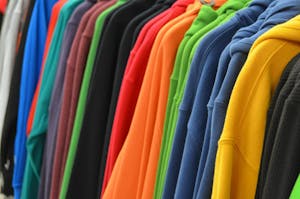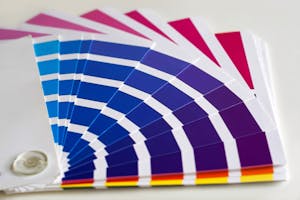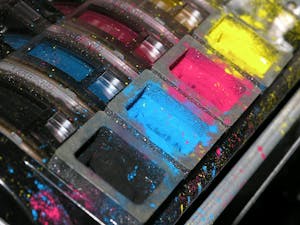
Nothing is quite as striking as a gorgeous, photorealistic image clearly printed on a dark background. Direct-to-garment (DTG) printing on dark color fabrics can seem to be a tricky undertaking. However with skill and practice it is certainly feasible. You can achieve photo-quality color images on a dark shirt with the right approach. And the results will be stunning and eye-catching. There are a few tricks needed in order to successfully use DTG for printing on dark fabric.
Best Fabrics to Use
The first key lies in the type of fabric you use for the DTG process. If you are working with dark garments, you cannot go wrong using combed and ringspun cotton. In general, 100% cotton is best, but you can go down to 50% cotton and still get good results. However, combed and ringspun cotton fabric delivers the best results for DTG printing. It is also a common material used for t-shirt blanks. In fact, this material not only offers high quality images but affordability and comfort for your customers.
Worst Fabrics to Use

Another major key to success is recognizing that not all products will work. Espically for DTG printing on a dark fabrics. Avoid hoodies, sweatshirts, and sweatpants which are fabrics with content less than 50% cotton. Avoid polyester performance wear as well. Look for blanks with a smooth surface and a tight weave. Even when focusing on cotton t-shirts. Watch out for colors that contain the words “heather,” “ash,” or “antique.” Reasons are that they usually contain enough polyester to cause problems. These examples simply do not result in high quality DTG screen printing on dark fabric.
Pre-treatment of Dark Fabrics
Pre-treatment is also critical if you want high quality DTG images that are both crisp and vivid. Pre-treatment is a clear liquid solution that is applied to the print area. It keeps the DTG inks from soaking into the fabric (which results in muted, dull colors) by filling in the spaces between the weaving and helps to create a smooth, printable surface. It also causes the white inks to show up clearly. It partially cures them as soon as they come into contact with it. This step is especially vital when printing on dark fabrics. Without pretreatment, the image quality is just unacceptable.
Note that the pre-treatment will disappear the first time the t-shirts are washed, which is a good thing. If you use too much pre-treatment, the ink will wash away with the pre-treatment. But if you use too little, the colors will be dull. Experience can help you determine the right amount of pre-treatment to use for your project. Keep in mind that more is not always better.
Recognize the Need for a White Underbase

To get the colors to show up properly while printing on dark fabric, they need to be printed on a white base. This is because the CMYK colors used are actually translucent. Translucent colors on top of a dark background will not appear vivid and crisp. This is part of the reason why pre-treatment is so important. It helps the white ink to form an excellent base for the rest of the image. This is one of the necessary steps for to printing on dark fabric
Test Run

Always do some test runs! Before you start printing on the final garments, run a nozzle check and do a few test prints. This can be done on some scrap fabric that is similar in color and content to your final product. The material used for the test prints should be pre-treated so you can get a good idea of how the final DTG result will actually look. Then run a nozzle check. If the nozzle check passes, then it’s time to run some test prints. Here are some things to look for when running those test prints:
•Do you see any banding that could be caused by clogs in the nozzles?
•Is the ink dense enough, or does the ink density need to be increased?
•Did the image print properly?
•Are there any issues with ghosting?
Once the test runs meet your quality requirements, you are ready to continue with the final print. Keep in mind that you don’t need to run any nozzle checks in the middle of a job unless you have noticed banding.
Printing a vivid, crisp, photographic quality colors on a dark garments can be a major challenge. Things to keep in mind include the type of material you are using (cotton is best) and the garment (t-shirts work best; sweatshirts and hoodies don’t work as well). The need for a white underbase for printing, and the importance of correct pre-treatment. Finally, take the extra time to make some test runs and adjust your settings accordingly, and the results will be excellent. Once this is all complete you can be sure you printing on dark fabric will be perfect
Contact A.I.R. Conway for All Your DTG Printing Needs
At A.I.R. Conway, we have the equipment, the skill, and the experience that results in excellent DTG printing even on dark garments. You can depend on us for reasonable prices, lightning-fast turnaround times, and outstanding quality. We also offer low minimums, no art charges, no screen charges, and no separation fees. We can advise you on the right materials and blanks for the very best results for your project. A.I.R. Conway is here for all your DTG, screen printing, and embroidery needs. Contact us today for a free quote!
